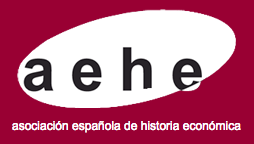Industrialization, financial development and money supply: Barcelona in the mid-nineteenth century
DOI:
https://doi.org/10.1016/S1698-6989(08)70169-3Keywords:
Industrialisation, Money supply, Prices, Interest rate, Spain, 19th Century, E41, E42, N13, N23Abstract
The article deals with the need, inherent in any process of industrialization, to increase money supply in order to avoid deflationary tensions. We examine the case of a major financial and commercial centre: Barcelona in the mid-nineteenth century. The paper specifies the volume of different types of fiat money in circulation (bank notes, “validated” cheques, internal pay orders, short-term bonds…) and their characteristics as means of payment. The aim of the study is to show that, in a context of “free banking” without legal tender of the paper money, there was an automatic process towards a balance between supply and demand for money and that any possible oversupply was eliminated through a “crowding out” effect. In such systems, money-supply growth seems have not significant effects on prices, but instead, sudden contractions of money supply did have intense upward impacts on interest rate.Downloads
Downloads
How to Cite
Issue
Section
License
Aquellos autores/as que tengan publicaciones con esta revista, aceptan los términos siguientes
- Los autores/as conservarán sus derechos de autor y garantizarán a la revista el derecho de primera publicación de su obra, el cuál estará simultáneamente sujeto a la Licencia de reconocimiento de Creative Commons Reconocimiento-No comercial-Sin obra derivada 4.0 Internacional que permite a terceros compartir la obra siempre que se indique su autor y su primera publicación esta revista, y no permite hacer uso comercial de la misma ni tampoco obras derivadas.
- Los autores/as podrán adoptar otros acuerdos de licencia no exclusiva de distribución de la versión de la obra publicada (p. ej.: depositarla en un archivo telemático institucional o publicarla en un volumen monográfico) siempre que se indique la publicación inicial en esta revista.
Plagio y fraude científico
La publicación de un trabajo que atente contra los derechos de propiedad intelectual será responsabilidad de los autores/as, que serán los que asuman los conflictos que pudieran tener lugar por razones de derechos de autor. Los conflictos más importantes pueden darse por la comisión de plagios y fraudes científicos.
Se entiende por plagio:
- Presentar el trabajo ajeno como propio.
- Adoptar palabras o ideas de otros autores sin el debido reconocimiento.
- No emplear las comillas u otro formato distintivo en una cita literal.
- Dar información incorrecta sobre la verdadera fuente de una cita.
- El parafraseo de una fuente sin mencionar la fuente.
- El parafraseo abusivo, incluso si se menciona la fuente.
Las prácticas constitutivas de fraude científico son las siguientes:
- Fabricación, falsificación u omisión de datos y plagio.
- Publicación duplicada.
- Conflictos de autoría.





